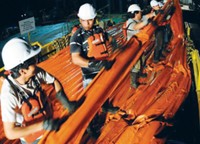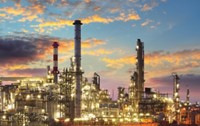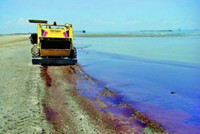Advertisement
Grab your lab coat. Let's get started
Welcome!
Welcome!
Create an account below to get 6 C&EN articles per month, receive newsletters and more - all free.
It seems this is your first time logging in online. Please enter the following information to continue.
As an ACS member you automatically get access to this site. All we need is few more details to create your reading experience.
Not you? Sign in with a different account.
Not you? Sign in with a different account.
ERROR 1
ERROR 1
ERROR 2
ERROR 2
ERROR 2
ERROR 2
ERROR 2
Password and Confirm password must match.
If you have an ACS member number, please enter it here so we can link this account to your membership. (optional)
ERROR 2
ACS values your privacy. By submitting your information, you are gaining access to C&EN and subscribing to our weekly newsletter. We use the information you provide to make your reading experience better, and we will never sell your data to third party members.
Analytical Chemistry
Better Fingerprinting For Oil Spills
Environmental Forensics: Researchers use ultra-high-resolution mass spectrometry to pinpoint the source of oil in samples collected after a spill
by Deirdre Lockwood
September 16, 2013

A team of U.S. researchers has demonstrated that a mass spectrometry technique can pinpoint with great accuracy the source of oil in samples collected after a spill (Anal. Chem. 2013, DOI: 10.1021/ac401604u). In a proof-of-concept study, the group assigned oil residue collected after a 2007 spill in San Francisco Bay to not just the container ship responsible, but to one particular tank within the boat. The technique could help scientists assess environmental damage to ecosystems after oil spills.

For environmental scientists studying the effects of an oil spill, the most important piece of information is the chemical makeup of the oil released. If the scientists know what chemicals are present in affected areas, they can determine the risk posed to those ecosystems and to human health. Linking environmental damage to a particular oil source is also required to assign legal responsibility to the appropriate party.
But identifying the source of oil isn’t easy, says Ryan P. Rodgers of Florida State University. Sometimes a spill involves multiple types of oil. The presence of natural oil seeps and other sources of pollution complicate things further. And volatile compounds in oil quickly evaporate or are degraded by microbes, leaving behind heavier compounds that are hard to analyze.
For many years, gas chromatography has been the main oil fingerprinting tool, Rodgers says. Unfortunately, the technique struggles to identify many compounds, including polar species, left over after oil has been sitting out in the environment—the state of most collected oil samples. Researchers call these problematic compounds an unresolved complex mixture. It’s “a great name for a hump of nothing useful that comes off the GC column,” Rodgers says.
In the past decade, researchers have identified components in this hump using other methods such as electrospray ionization time-of-flight mass spectrometry. Now Rodgers and his colleagues have increased the resolution further by using electrospray ionization Fourier transform ion cyclotron resonance (ESI FT-ICR) mass spectrometry. The technique can analyze a greater, but different, range of compounds than gas chromatography can, Rodgers says: ESI FT-ICR mass spectrometry can detect compounds with 20 to 1,200 carbon atoms, and gas chromatography can identify those with one to 35 carbons.
The team tested the mass spectrometry method on samples collected after a 2007 spill caused by the container ship Cosco Busan. The vessel hit the tower of a bridge spanning the San Francisco Bay and released fuel into the water. Two tanks on the ship, each filled with a different formulation of fuel oil, were initially suspected as the source of the spill. Using gas chromatography, other researchers previously had determined that only one of the tanks was responsible for the released oil (Mar Pollut Bull. 2010, DOI: 10.1016/j.marpolbul.2010.09.001).
Rodgers and his colleagues analyzed oil samples from the two ruptured fuel tanks, as well as samples of oil residue that others had scraped off rocks on the bay’s shoreline over a period of about two years after the spill. Using ESI FT-ICR, the researchers identified about 6,000 polar species in the residue. Through a statistical analysis comparing mass spectra from the rock samples and the fuel tank samples, the team assigned the source of contamination to the same tank as the earlier study did. With the mass spectrometry data, their statistical model was more confident in the identification than was the previous model created with the gas chromatography data.
Jan H. Christensen, an analytical chemist at the University of Copenhagen, says the team’s method has great potential to characterize compounds in the polar fraction of oil. But he thinks the method’s expense—the instrument alone costs about $700,000—may limit its use by researchers.





Join the conversation
Contact the reporter
Submit a Letter to the Editor for publication
Engage with us on Twitter